Cognitive Psychology Test 1
1/37
Earn XP
Description and Tags
Umass Amherst, Psych 315 Cognitive Psyhology -- Test 1 on Visual Perception, Object Reognition, and Attention. Textbook chapters 3-5
Name | Mastery | Learn | Test | Matching | Spaced |
|---|
No study sessions yet.
38 Terms
The photoreceptors called rods are good for navigating in what kind of environment?
a. dimly lit
b. one in which color discrimination is vital
c. one in which noises need to be finely discriminated
d. one in which fine visual detail is important
A. dimly lit
Fill in the blanks with: bipolar calls (B), ganglion cells (G), Photoreceptors (P)
Light passes into the retina first through the x, then the x before arriving at the x.
Visual processing starts at the x which then activates the x and then activates the x
Light passes into the retina first through the G, then the B before arriving at the P.
Visual processing starts at the P which then activates the B and then activates the G
The visual pathway from the occipital-parietal cortex is responsible for…
Responsible for the locations of objects. Called the “where” system.
The visual pathway from the occipital-temporal cortex is responsible for…
Responsible for identification of objects. called the “what” system
In an experiment designed to test the receptive field of a center-suround cell, a stimulus was placed in a certain location, and the firing rate of the cell decreased. This most likely occurred because the stimulus was located…
The stimulus was entirely in the surround of the cell’s receptive field
How do you calculate the perceived distance of an object?
Perceived distance (m) x size of retinal image (mm)
How, according to Helmholtz, do we achieve size
constancy through unconscious inference?
There is an unconscious calculation of the size of the retinal image and the distance away the object is, which arrives us to the perception of the actual size of the object.

Which gestalt principle do we use to perceive this figure?
Closure
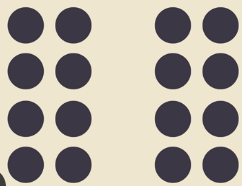
Which gestalt principle do we use to perceive this figure as two groups of dots and not 16 dots?
Proximity
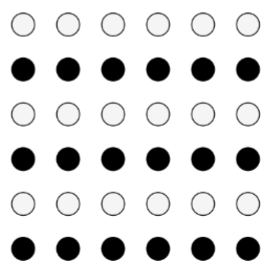
Which gestalt principle do we use to perceive this figure as rows of dots instead of many dots, or columns?
Similarity
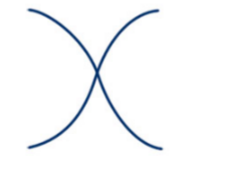
Which gestalt principle do we use to perceive this figure as two crisscrossing lines?
Continuity
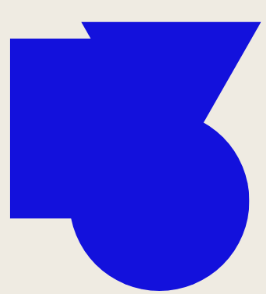
Which gestalt principle do we use to perceive this figure?
Simplicity
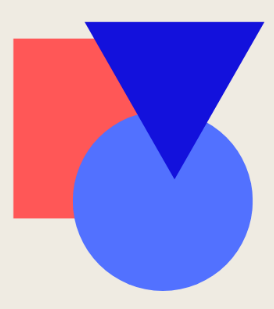
What are the 5 Gestalt principles of organization we discussed in class?
Closure, simplicity, continuity, proximity, similarity.
In apperceptive agnosia, object recognition is impaired bc of deficits in_____
Perceptual processing
In associative agnosia, object recognition is impaired bc of difficulties_____
Accessing knowledge about objects stored in memory
A patient with associative agnosia would…
a. be able to name objects
b. be able to copy and match figures
c. have damage in the visual “where” pathway”
d. recognize objects but feel unfamiliar with them
B. A patient with associative agnosia would be able to copy and match figures
Why is a high-frequency word recognized faster than a low-frequency word?
A high-frequency word has a higher resting level than the low frequency word, so it needs less stimulus to reach the threshold.
Which of the following is true about the recognition of inverted faces?
A. recognition of inverted faces is harder than for upright faces
B. face processing is affected only minimally by inverting the image
C. Inverting a nonliving object, such as a house, produces a bigger deficit in recognition than inverting a face
D. recognition of objects that are not faces is not affected by inverting the image
A. Recognition of inverted faces is harder than for upright faces
____ driven priming requires resources, ____ driven priming does not require resources
expectation-driven priming requires resources, stimulus-driven priming does not require resources
What is the load theory?
When an attended stimulus is easier, more processing power is left for the unattended stimulus to be perceived. When the attended stimulus is more complex, there is less capacity left for the unattended stimulus and it likely won’t get processed.
What is the difference between Broadbent and Teisman’s early selection models?
Broadbent’s filter theory of attention: There is a bottleneck in attention, so only a certain amount of information can be processed. Stimuli are sorted by physical characteristics and the ones not chosen are fully blocked.
Treisman’s attenuation model: In this model, all stimuli are processed, and then all but one are “turned” down to focus all the attention on the attended stimulus.
In one unattended stimuli are blocked and never even processed, in the other they are simply not attended to.
What is inattentional blindness?
Not noticing something because you are attending to something else (and therefore not paying attention to other stimuli).
What is prosopagnosia?
Face blindness. A person with prosopagnosia can notice the features of faces, and what is a face vs not a face, but just cannot recognize whose face it is
In what kind of cell does lateral inhibition happen?
Ganglion cells
How does lateral inhibition cause the match band illusion?
Lateral inhibition slows the firing rate of ganglions, and does so less for the ganglions on the edge. This causes edge enhancement bc the responses of cells at the edge are stronger than the ones in the middle.
What is the binding problem?
How do we combine all our individual pieces of information into one perception?
How does spatial position help the binding problem?
If two pieces of information come from the same place (position), like there’s blue in that spot, and there’s a cylinder in that spot, we know the information is about the same object
How does neural synchrony help to solve the binding problem?
If neurons are firing at the exact same time and position, they are probably receiving information from the same stimulus
What part does attention play in fixing the binding problem?
For attended stimuli, neural synchrony is better and therefore perception is easier. When stimuli are less attended, building a synchronous perception is harder (the binding problem is worse)
→ People with attention deficits have a harder time combining features to perceive the entire scene
What are conjunction errors? What cases them?
Conjunction errors are when all the features of a situation are correctly identified, but pieced together wrong to form the wrong perception
What is transduction?
Converting sensory input into neural impulses
Starting at the retina, what is the path light/neural information takes through the eye and brain
retina → photoreceptors → bipolar cells → ganglions → optic nerve → LGN (thalamus) → occipital lobe → where/what system
What is motion parallax?
What is it used to measure?
When an object is moving, it will seem to move faster when it is close and slower when it is far away
→ Shows how far away something is
What is optical flow?
What is it used to measure?
As things are moving towards us they grow larger
→ Shows depth/how far away something is
What is akinetopsia?
Motion blindness. A person can see that an object used to be over there and is now here, but didn’t actually see it move
What is the path light takes to get through the eye?
Cornea (light tissue in front of eye) → Iris (muscle that controls size of pupil) → Lens (shapes and adjuusts to send light to back of eye → Retina (back of eye where the lens sends the image) → Fovea
Visual accommodation
Muscles on the side of the eye tighten and relax to help see nearby and far away objects
Where in the eye does transduction happen?
The photoreceptors